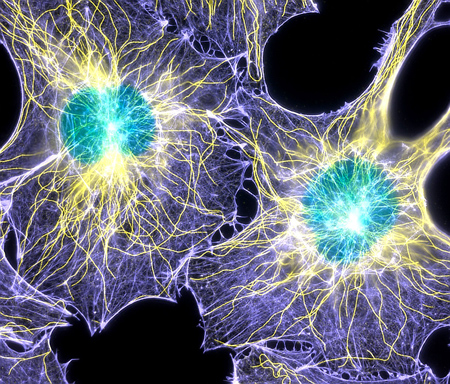16 The Cell
Cells are the basis of life—the basic structural unit of living things. Molecules such as water and amino acids are not alive but cells are! All life is comprised of cells of one type or another.
One of the hallmarks of living systems is the ability to maintain homeostasis, or a relatively constant internal state. The cell is the first level of complexity able to maintain homeostasis, and it is the unique structure of the cell that enables this critical function.
The current cell theory states that:
- All known living things are composed of one or more cells.
- All new cells are created by pre-existing cells dividing in two.
- The cell is the most basic unit of structure and function in all living organisms.
Modern cell theorists assert that all functions essential to life occur within the cell; and that, during cell division, the cell contains and transmits to the next generation the information necessary to conduct and regulate cell functioning.

Let’s begin our study of the cell by investigating the basic anatomy of an animal cell. Each cell consists of three components shown in the image above.
- A cell membrane which surrounds and protects the cell
- The cytoplasm which is the watery interior of the cell which contains ions, proteins, and organelles
- Organelles which carry out all activities necessary for the cell to live, grow, and reproduce
Within the body, cells represent a level of organization between organelles and tissues. Organelles in turn are comprised of specialized macromolecules and tissues are collections of specialized cells. Brain, kidney, liver, muscle and lung tissues differ from each other because of the structure and function of their constituent cells. Thus, the cells comprising each tissue type vary in shape, size and interior structure to permit their specific physiological function within the tissue.

